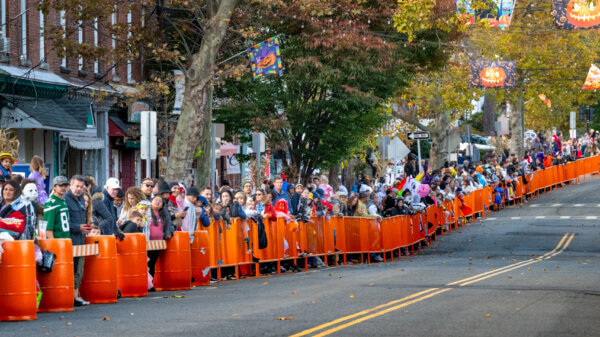Thanksgiving pies and turkeys were barely cooled when an unexpected storm slammed the East Coast. A massive water surge, shrieking winds, and a deep freeze followed in its wake. It was 1950, long before Doppler radar, satellite images, or weather apps could warn anyone what was coming. Storms didn’t even have names yet—and no one imagined this one would become legendary.
“We didn’t have much, but we had each other—and somehow, that was enough.”
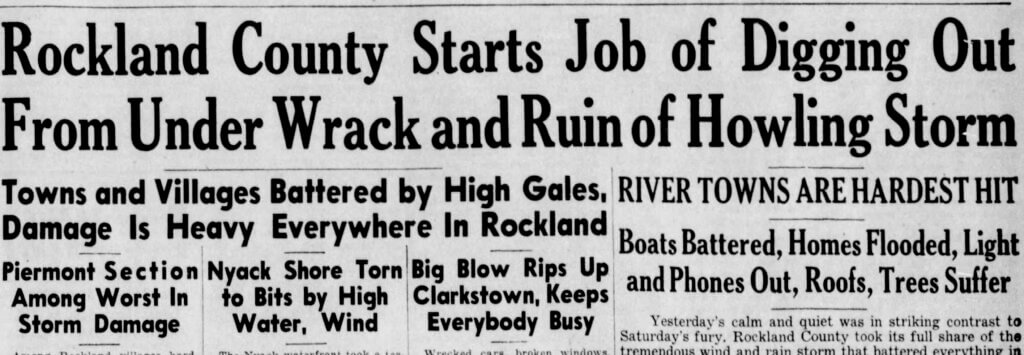
A Storm for the Record Books
Known variously as the Great Appalachian Storm, Great Sou’easter of 1950, and Great Thanksgiving Storm, it remains one of the fiercest weather events of the 20th century. Meteorologists later classified it as an extratropical cyclone—born when a tropical low from the Carolinas collided with a stubborn high-pressure system off Maine. The clash dragged Arctic air deep into the South while whipping the East Coast with hurricane-force winds.
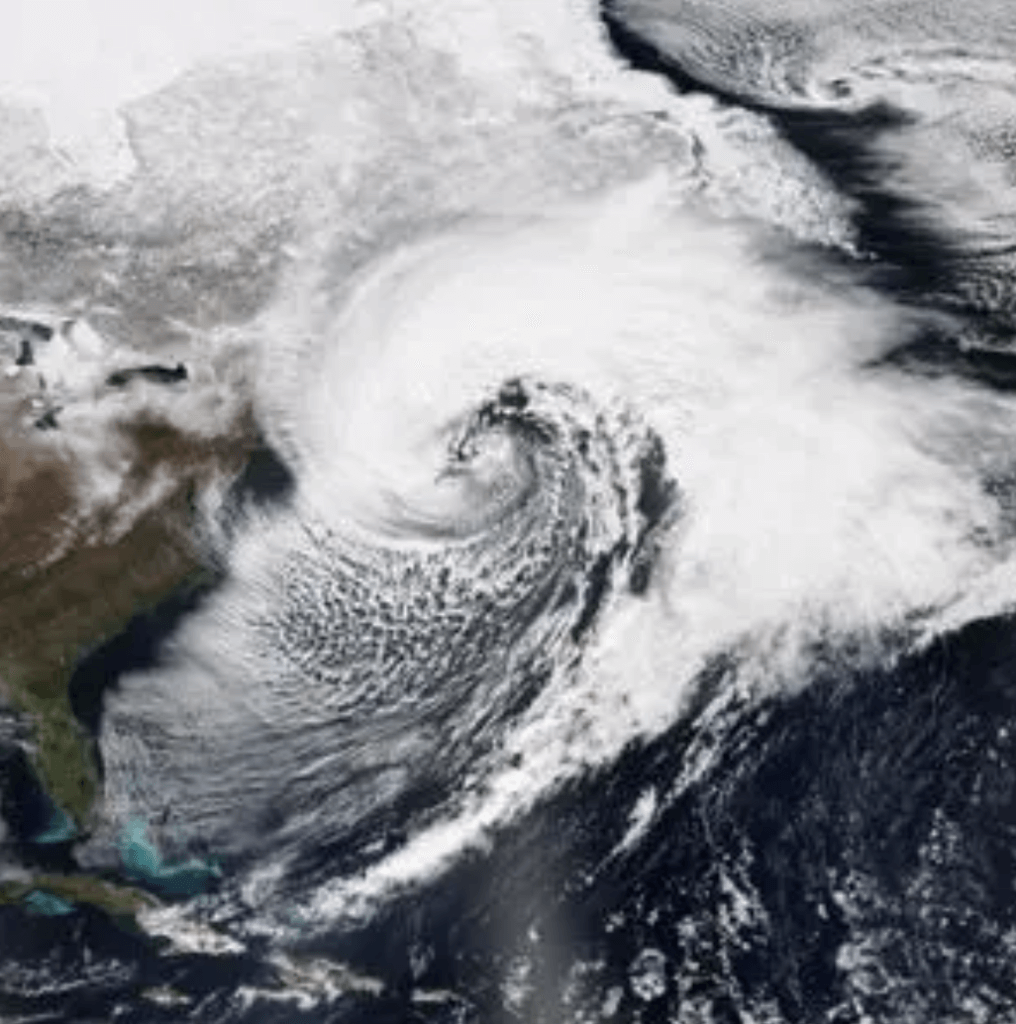
The results were staggering. Chicago dropped to -2°F. Steubenville, Ohio, was buried under 44 inches of snow; Pittsburgh got more than 30 inches. Winds howled at 94 mph in New York City and an incredible 108 mph in Newark. Storm surges along the mid-Atlantic coast rivaled those of Hurricane Sandy six decades later. Atlantic City recorded a 7.5-foot surge. Rail lines vanished, beach houses washed away, and both LaGuardia Airport and parts of Manhattan flooded.
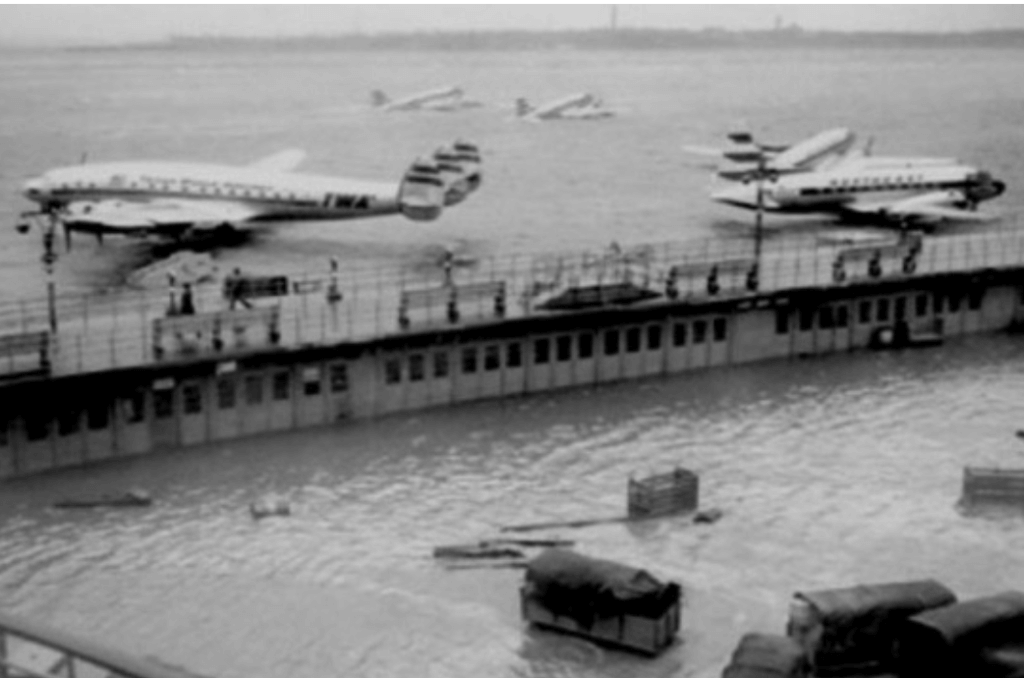
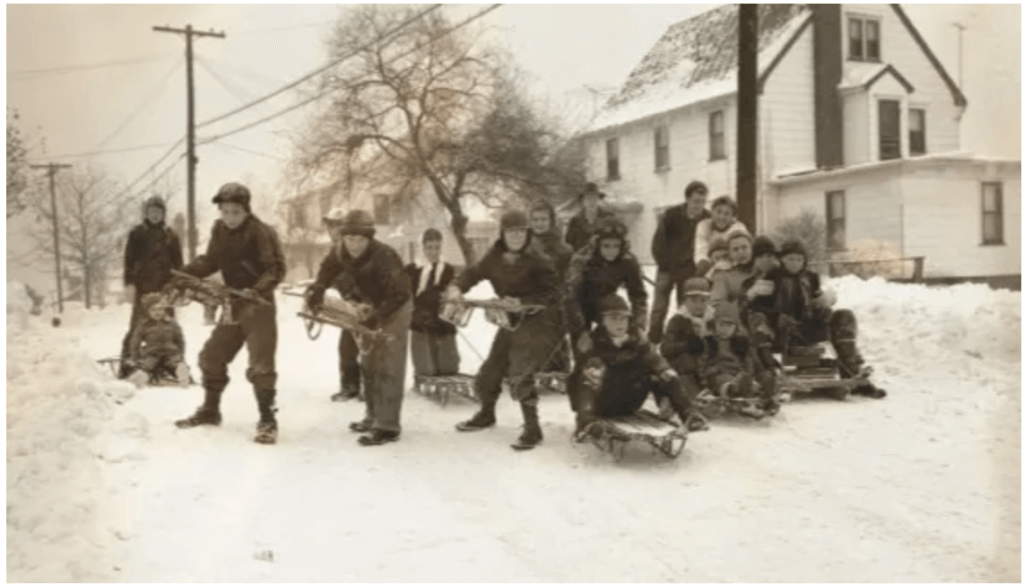
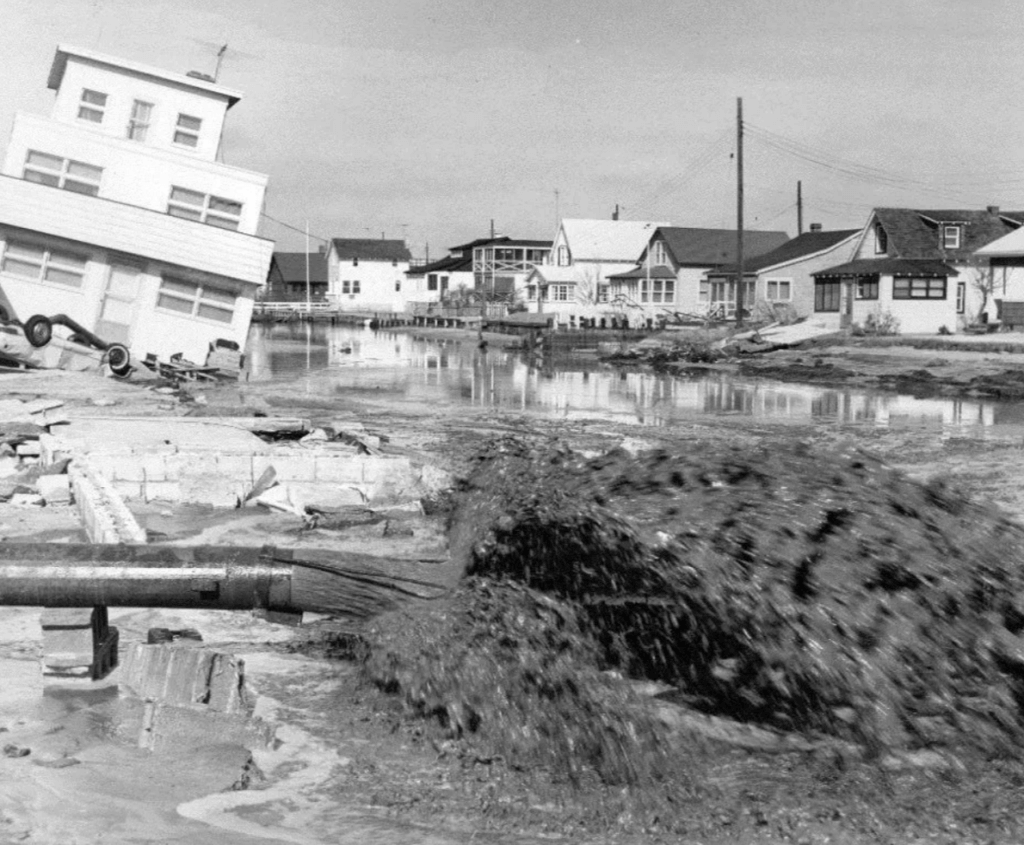
A Two-Day Blow in Nyack
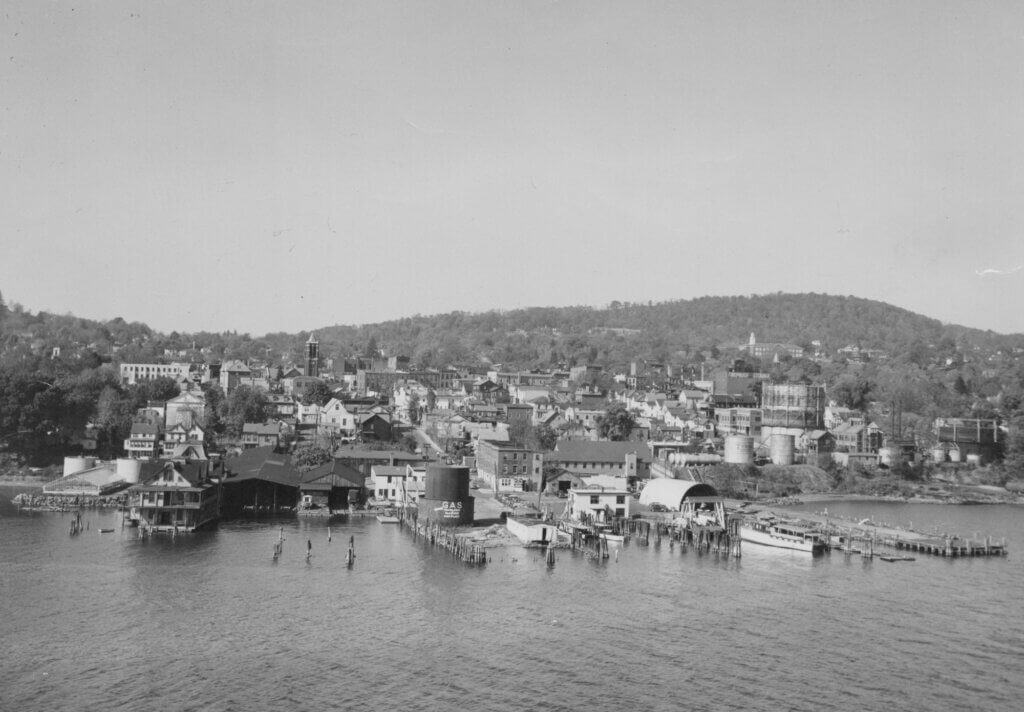
While New York City reeled, Nyack faced its own disaster. On the Friday after Thanksgiving—while state officials debated a possible Thruway bridge between Nyack and Tarrytown—the Journal News headline read: “Howling Gale, Driving Rain Cause High County Damage.” Wind speeds reached 105 mph atop Bear Mountain. River Road between Piermont and Nyack disappeared under water. Route 9W was blocked by more than 300 fallen trees between Nyack and the George Washington Bridge. Power lines snapped, and lights flickered across the county.
Then came the second act. In the early hours of Saturday morning, a storm surge roared up the Hudson. Luckily, it struck at low tide; a few hours later it would have been catastrophic. Even so, River Road washed out below Salisbury Hill (where the Tappan Zee Bridge now crosses the river), and Grand View’s village hall filled with water.
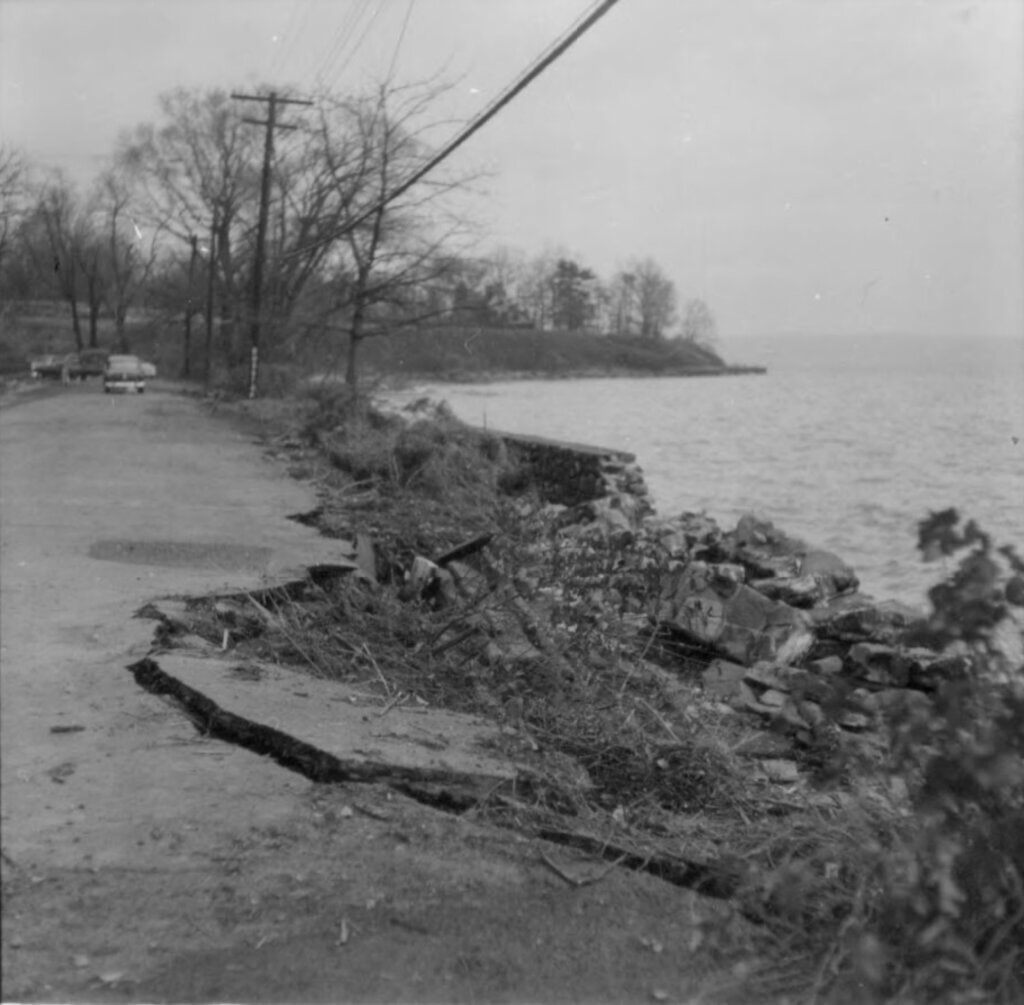
The Riverfront Takes the Hit
The lower section of Memorial Park—then much lower than today—lay under a thick blanket of debris. In those years, Nyack’s waterfront bustled with life: boatyards, docks, and boathouses lined the river from South to Upper Nyack. By the storm’s end, much of it was gone.

The once-glorious Nyack Rowing Association building disintegrated in the storm. Boats at Powell’s Boatyard near Memorial Park smashed against the shore. In Upper Nyack, an Army P.T. boat rammed a dock and sank. The Valhalla, a teak-and-mahogany beauty, splintered on Ben Hecht’s riverfront property on Perry Lane. Boat owners emerged in disbelief at the destruction. The surge damaged the ferry landing and the nearby seaplane dock. Planks from the Main Street dock slammed against the seaplane hangar. The hangar nearly sank, but the only seaplane damaged was one left outside.
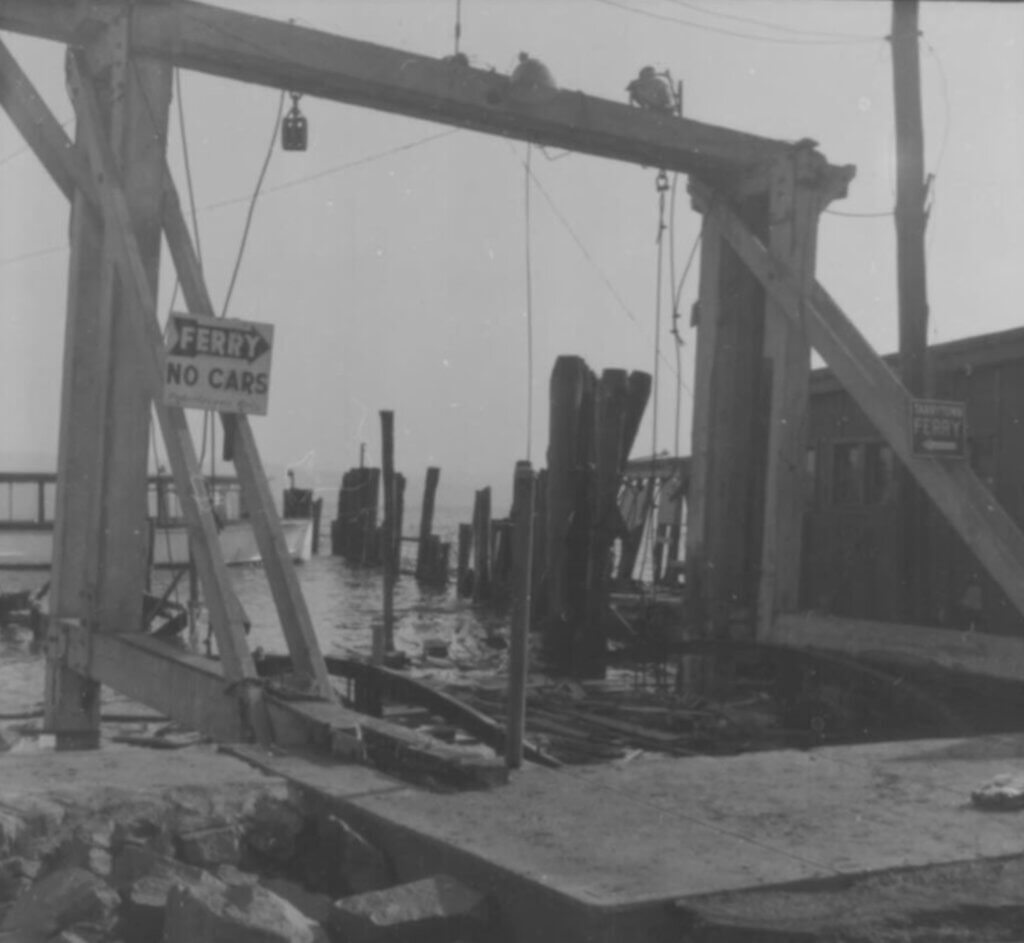
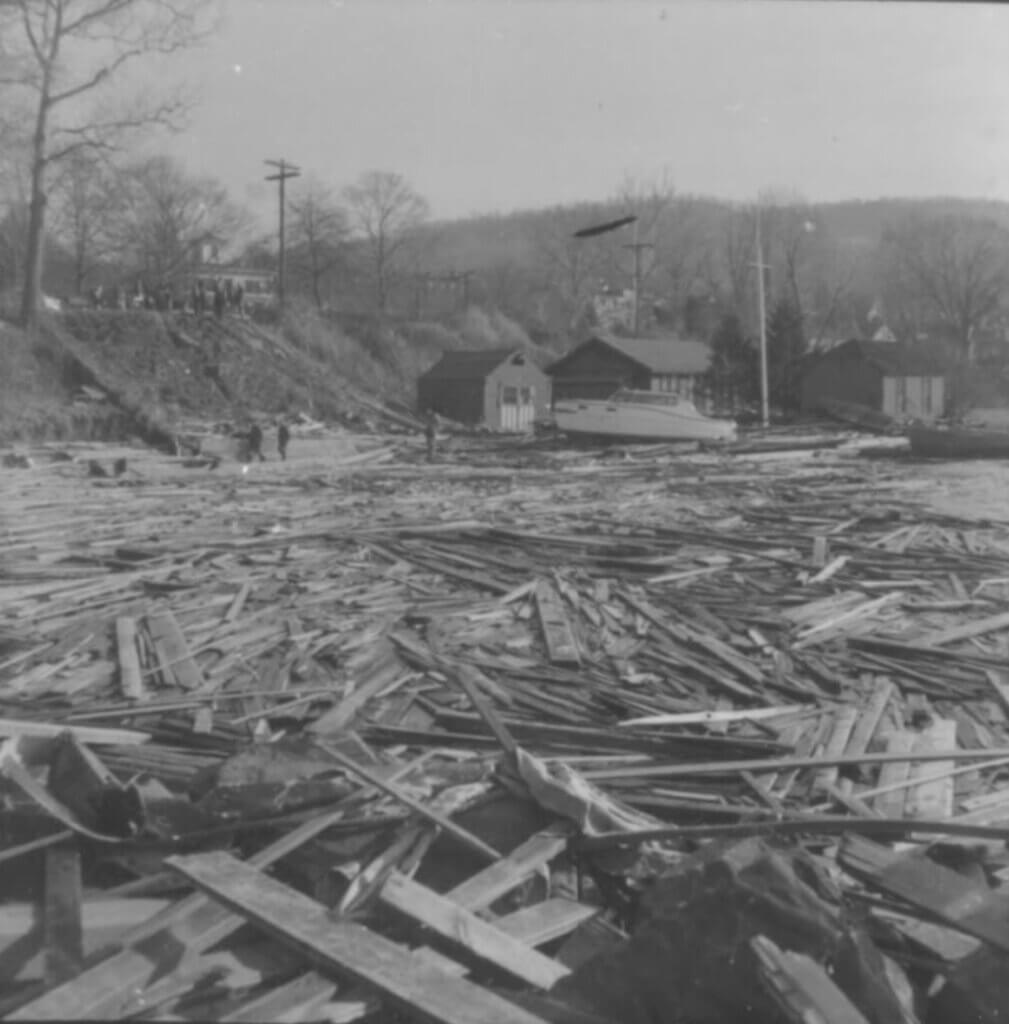

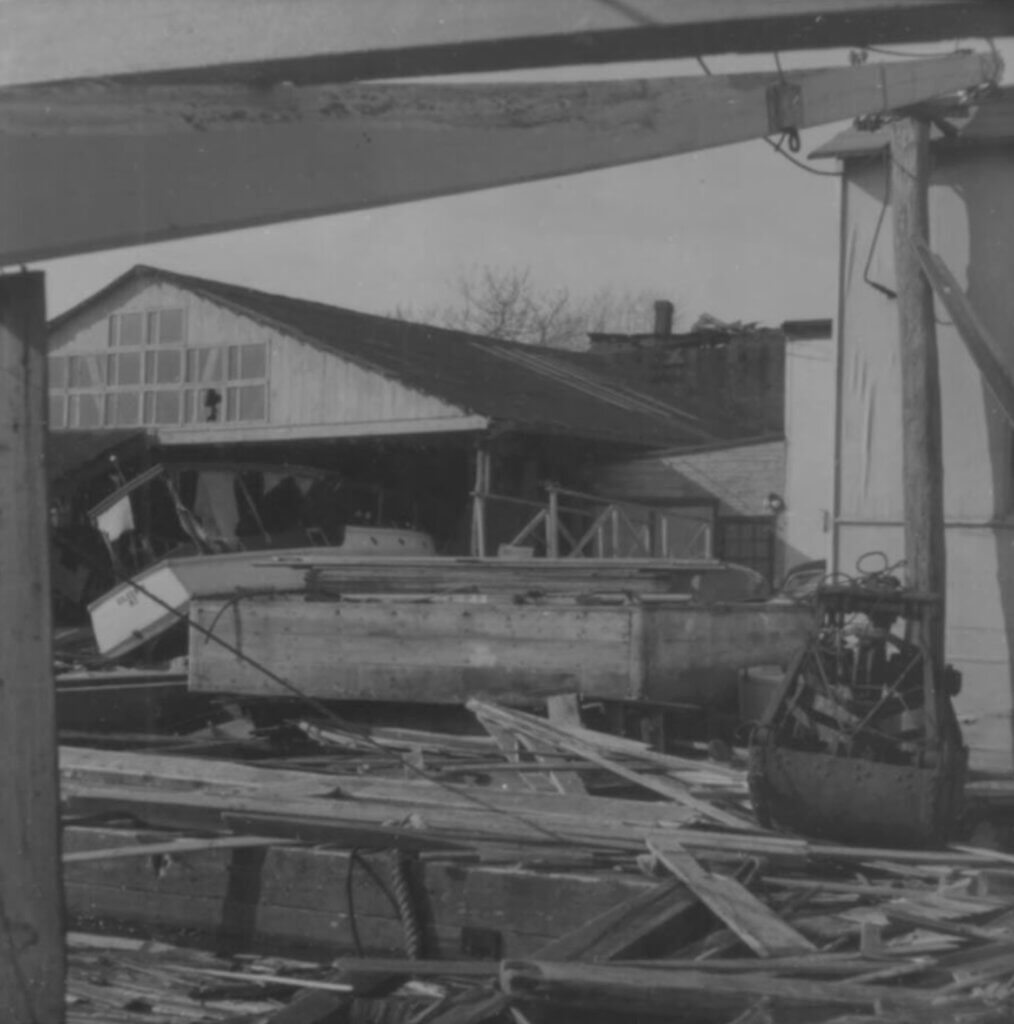
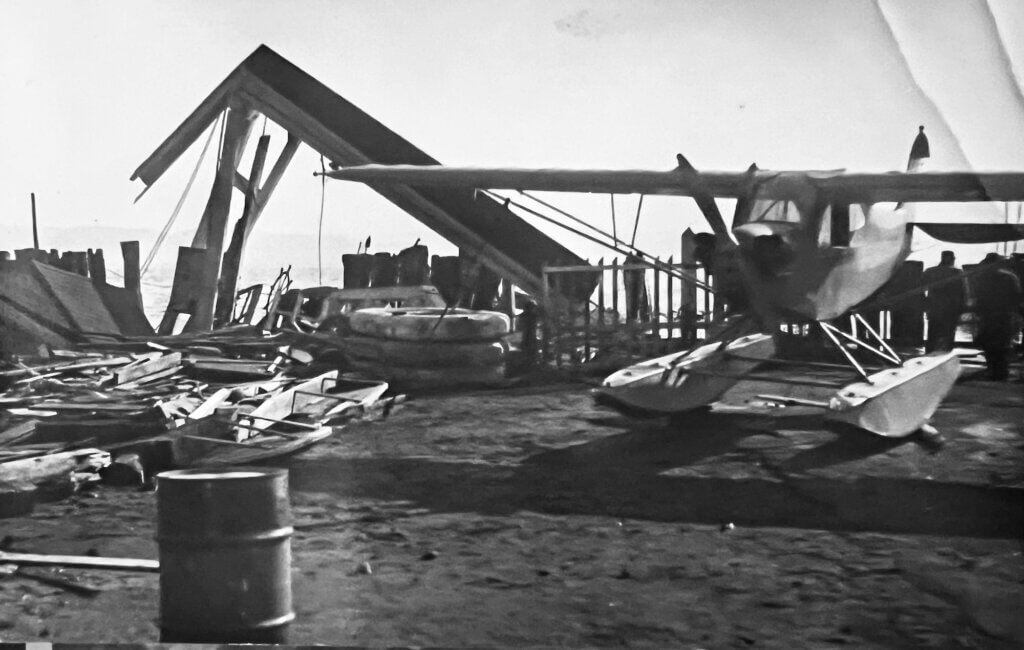
Farther north, the long dock at Nyack Beach State Park—built during the quarry years—vanished and was never rebuilt. Hook Mountain Beach lost its sand, docks, carousel, dance hall, and playground. The storm erased them all, leaving behind only rocks, trees, and memory.
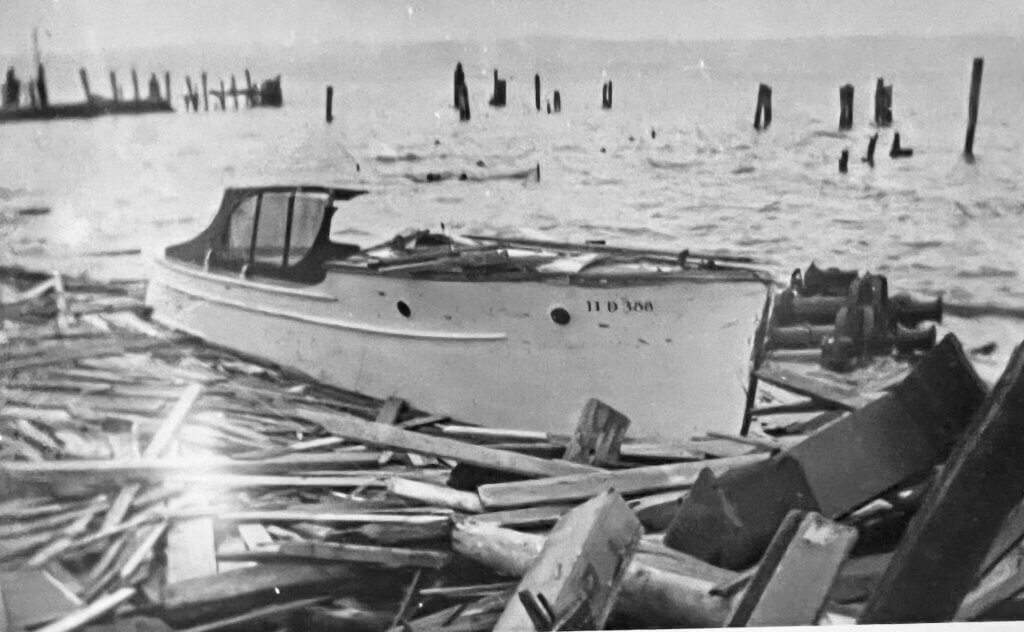


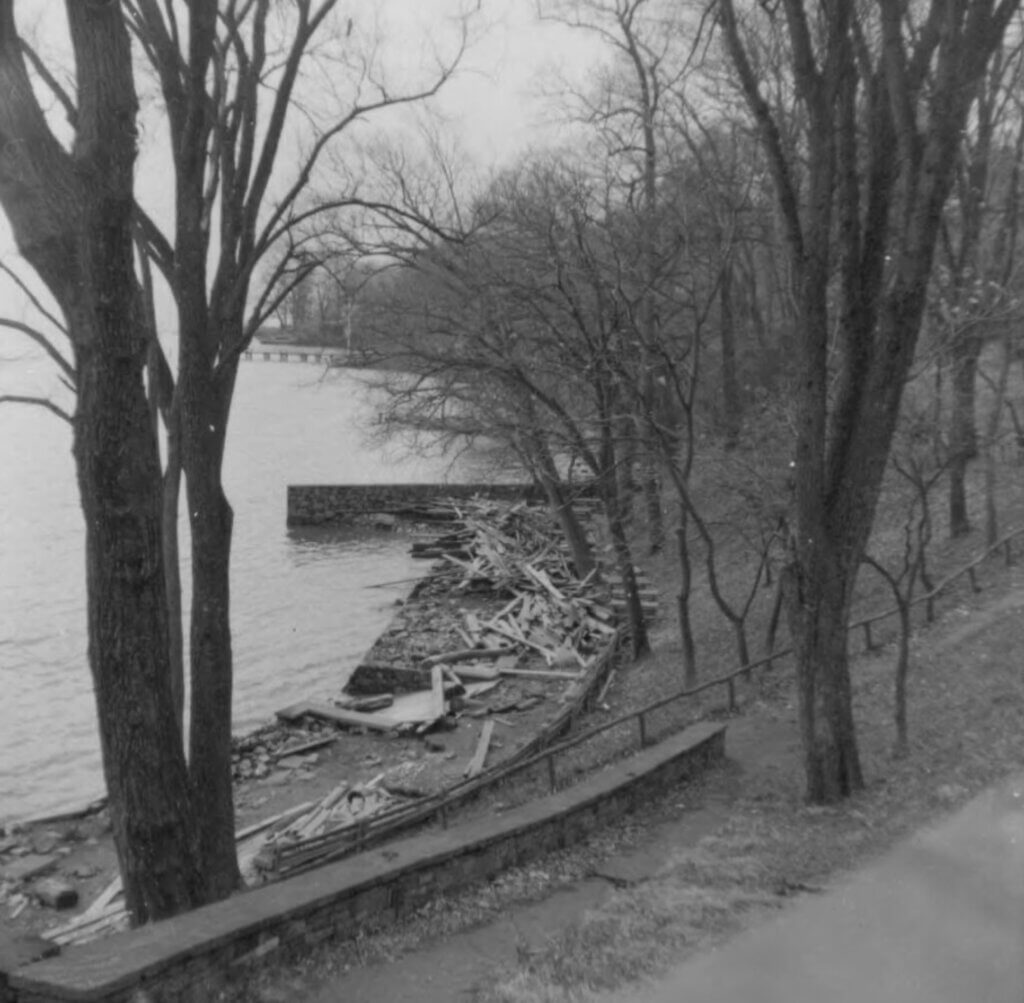
What People Remember from 1950
Neighbors recalled the eerie sound of the wind howling down the Hudson—more like a freight train than a storm. Tree limbs snapped like gunfire, power lines sparked in the night, and telephone wires went dead. Families huddled around fireplaces, bundled in blankets as the temperature plunged.
By morning, people emerged to scenes they’d never forget: rowboats perched in backyards, boathouses reduced to matchsticks, plywood covering shattered windows, ice forming on flooded streets. Some trudged to the riverfront in disbelief; others just stood in silence.
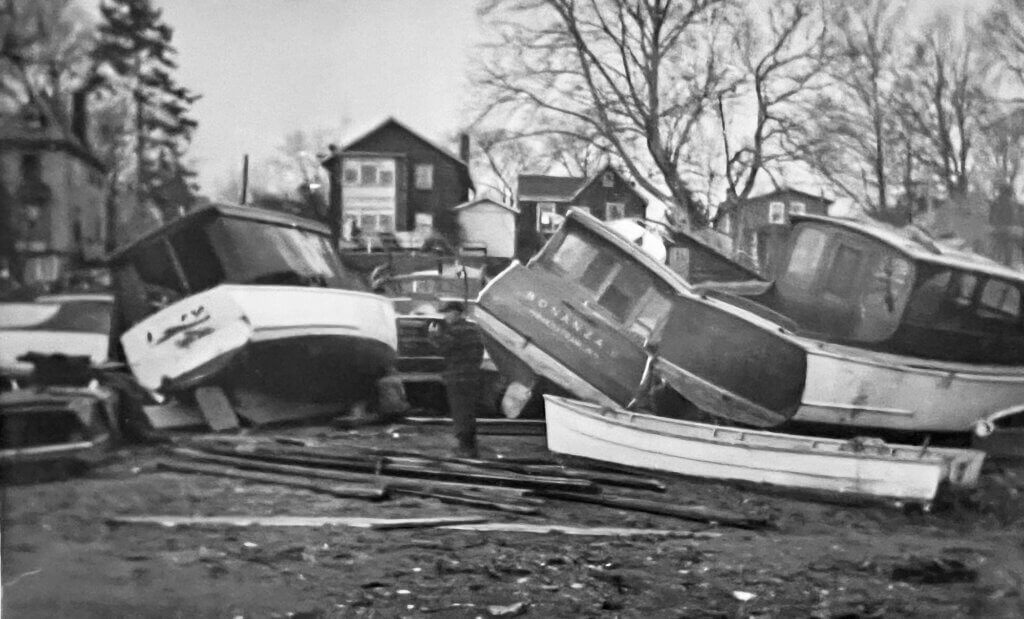
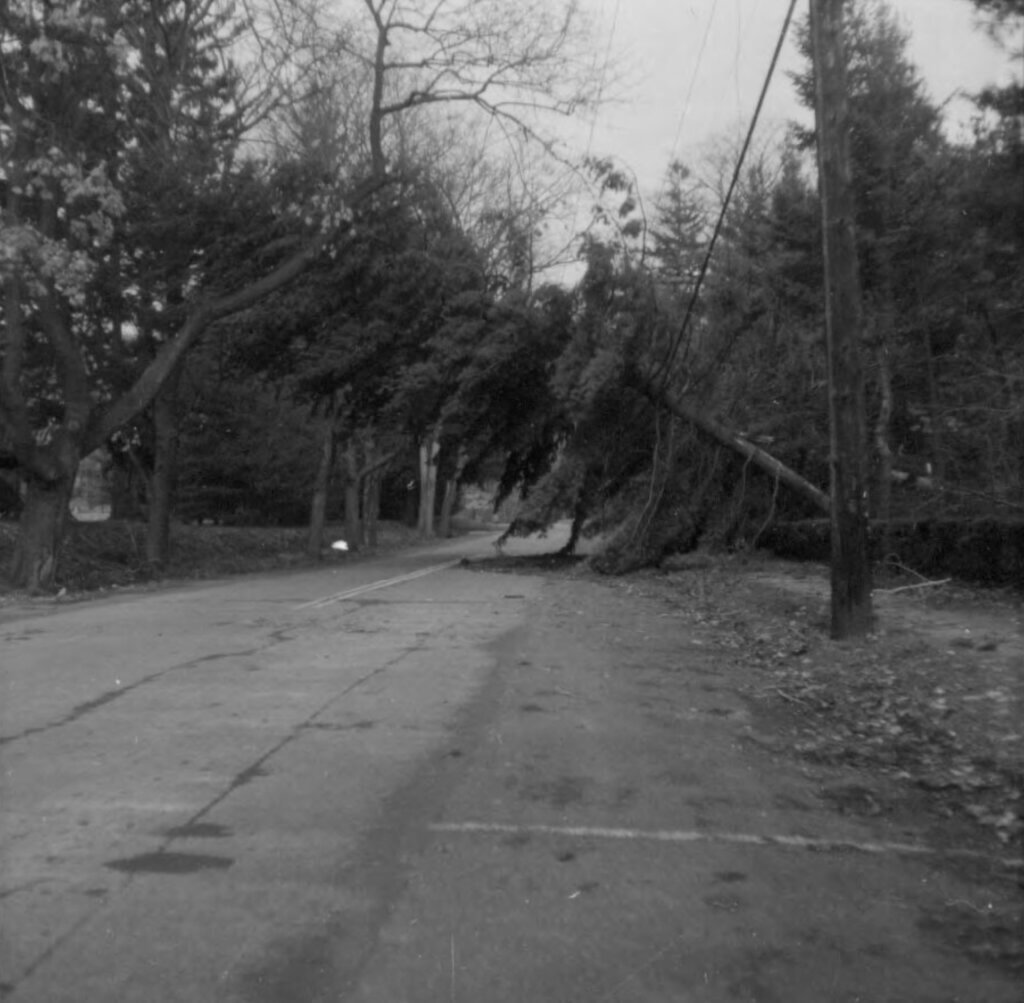
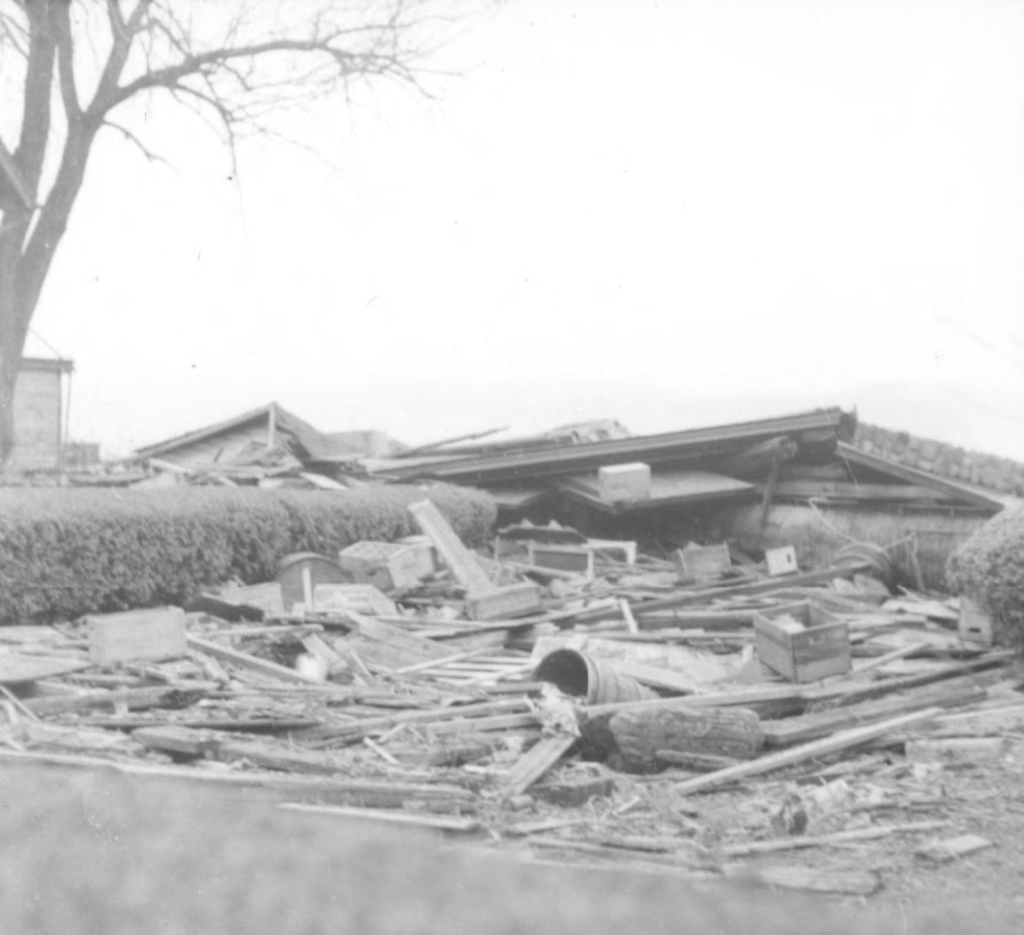
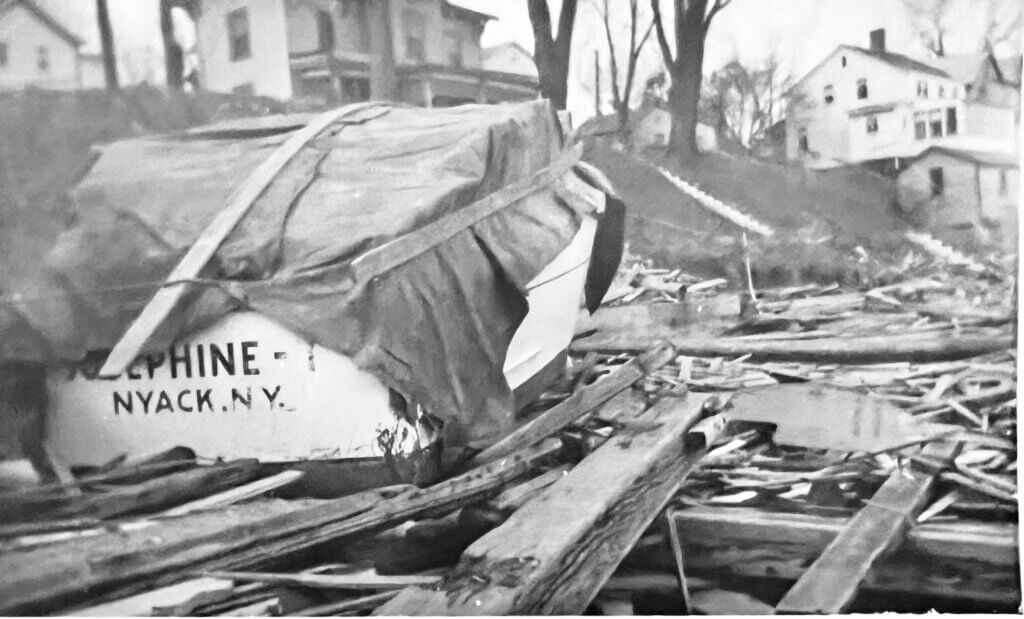
Yet through the destruction came a sense of community. Neighbors shared food, cleared fallen trees, and salvaged what they could. Churches opened their doors for warmth. One longtime resident later said, “We didn’t have much, but we had each other—and somehow, that was enough.”
Rivertown Damage
Most of the storm damage occurred in the river towns. Much of Piermont’s shoreline went underwater. Residents of Bogertown had to be rescued by boat. Grassy Point residents evacuated early as several feet of water flowed over the low-lying areas. Route 9W south of Congers was closed after numerous trees fell on the west side of Rockland Lake.
Inland, a young man broke his collarbone, leg, and ribs when a tree fell on him while hiking in the mountains of Harriman. Fortunately, his companions managed to move the tree off him, and emergency crews from Suffern carried him to safety on a stretcher.
The Storm That Changed Nyack
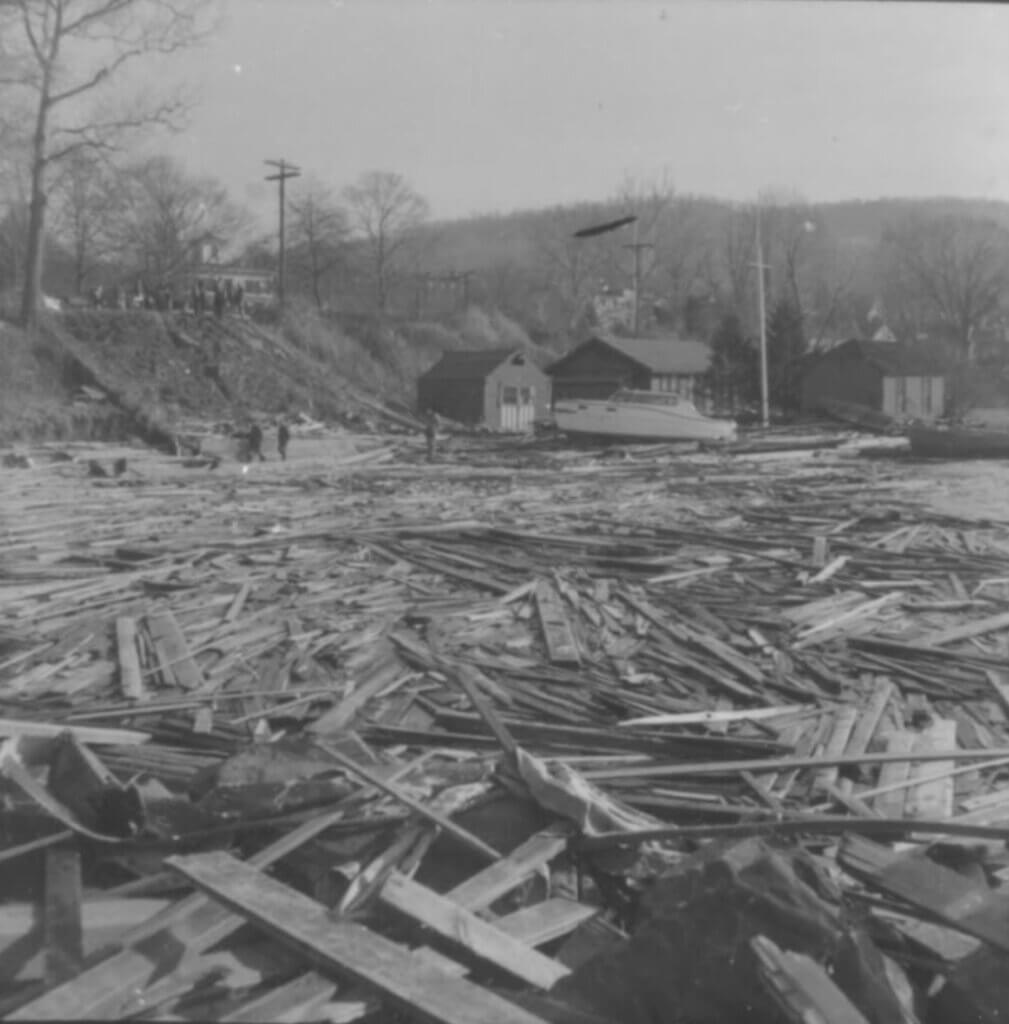
The 1950 Thanksgiving storm became a landmark in meteorological study and remains a reference point for modern forecasters. Every generation remembers its defining storm—Sandy for ours, the Great Thanksgiving Storm for theirs.
It struck suddenly, reshaped Nyack’s riverfront, and left scars that never fully faded. Yet from those winds and waves came stories of endurance that a few people still tell—75 years later—about the Thanksgiving when the river rose and Nyack held firm.
Photography Note:
After the storm, Grand View photographer J. Fred Geist documented the widespread damage along the riverfront. His photographs, preserved in the Nyack Library and the Courtwright Collection of the Historical Society of the Nyacks, illustrate this article.
Mike Hays has lived in the Nyacks for 38 years. A former executive at McGraw-Hill Education in New York City, he now serves as Treasurer and past President of the Historical Society of the Nyacks, Vice President and Trustee of the Edward Hopper House Museum & Study Center, and Historian for the Village of Upper Nyack.
Since 2017, he has written the popular Nyack People & Places column for Nyack News & Views, chronicling the rich history, architecture, and personalities of the lower Hudson Valley. As part of his work with the Historical Society, Mike has researched and developed exhibitions, written interpretive materials, and leads well-attended walking tours that bring Nyack’s layered history to life.
Married to Bernie Richey, he enjoys cycling, history walks, and winters in Florida. You can follow him on Instagram as @UpperNyackMike.
Editor’s note: This article is sponsored by Sun River Health and Ellis Sotheby’s International Realty. Sun River Health is a network of 43 Federally Qualified Health Centers (FQHCs) providing primary, dental, pediatric, OB-GYN, and behavioral health care to over 245,000 patients annually. Ellis Sotheby’s International Realty is the lower Hudson Valley’s Leader in Luxury. Located in the charming Hudson River village of Nyack, approximately 22 miles from New York City. Our agents are passionate about listing and selling extraordinary properties in the Lower Hudson Valley, including Rockland and Orange Counties, New York.




